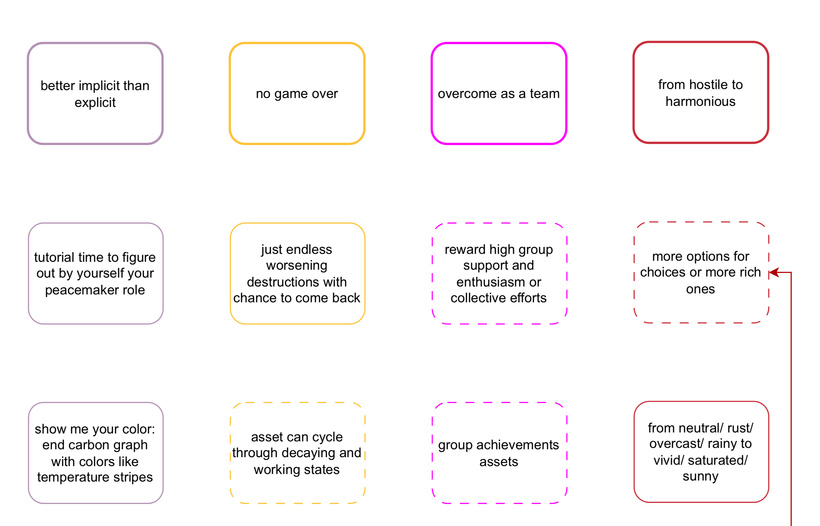Dev Log #4.6 - Narrative Design Frameworks
Niwl Games
- 3 minutes read - 543 wordsPillars
Narrative design pillars with Yann Kervran.

The team has made a first iteration on narrative, to test the Forest paths method, created by Alexander Swords. The idea was to dip the toes to see if we feel comfortable with it and to get a first glimpse of what we could retrieve from it. The method is a tool to build a narrative structure away from conventions of a non-linear media.
It serves the pillars of the game by highlighting the dramatic forces between Elements and/or Sequences, from a broad view to the most granular part. It relies on two major elements:
- the High Concept Formula which explains in a concise form what to expect from the game.
- the Narrative Pattern which details Elements and Sequences with the unexpected, the dramatic force implied between items
As a tool, it will never deliver a definitive board, but should be use on iterations, to help strengthening forces the team can identify to reveal the game purpose, using any media they see fit.
This process has been helpful to the team so far; it helped to clarify some elements, to ask more questions about the narrative content and highlight some dramatic forces we suspected. And it is a fun to make a working session with it! So we will stick with it for the project.
High Concept Formula

The board has at the top the High Concept Formula with several elements to help us build a sentence summarizing the game: The player as <character> performs <actions>to manage <resources>, overcome <obstacles>, and achieve <goal/s>.
For The Shipyard it’s:
“Can the player assign and chat to workers to inform their decisions on how to build cleaner ships using scraps from tides, balancing city approval and low cash, and achieve depollution?”
Then, we trap the players in a loop of polluting retrofits, just like in real life many companies are trapped in loops.

In this example, choosing retrofit instead of polluting newbuild is the way out of the trap. Retrofit meaning installing wind sails to make sure the ship meets emission regulation, ie: it goes farther and uses less fuel.

In a second session, we used the same process but to define pillars of game design.
We included in this post the PDF that resulted out of our team narrative design sessions, so you can zoom in to your hearts content and use it as inspiration for how to apply narrative design frameworks to your own work.
Download the Narrative Design moddboardLet us know if you have any questions about narrative, and we’ll cover it in a future deep dive.
Testing Dialogic
Sneak peek into our latest work, Yann has been testing out Dialogic, a Godot engine add-on for dialog and visual novel. More on this visual novel prototyping later.
For UI styling, Yann used Kenney assets. We’re hoping that regardless of the game’s commercial success, as many assets as possible can become CC-BY or CC0. Especially for semi generic props like buildings, cranes. But why not characters too. The open source gaming community has been generous and we hope to be able to share Creative Commons assets after the v1.0 release of The Shipyard.
Thanks again for reading and for being early participants in this exciting adventure!